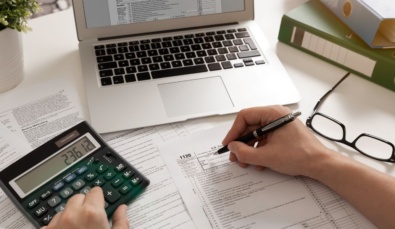The 2023 Federal Budget was announced on Tuesday 9 May 2023, with a focus on cost-of-living relief and modernising our economy. But what does it means for you as a business owner?
There were only a few tax and superannuation changes announced, which is good news. However, no mention was made of the previously announced Stage 3 Income Tax cuts that are planned to begin on 1 July 2024.
There were 2 very important things not mentioned in the 2023 Budget that may affect you as a business owner:
- With Temporary Full Expensing finishing on 30 June 2023 and its replacement with a Small Business Instant Asset Write-off capped at $20,000, a business that sells or trades in a motor vehicle would have 100% of its sale price included in taxable income in the year it is sold if it fully expensed its purchase in an earlier year.For example, if a business trades in a vehicle (that was fully expensed) for $50,000 and purchases another vehicle for $60,000 in 2024, $50,000 will be included in its taxable income but only a portion of the $60,000 purchase price of the new vehicle will be allowed as a depreciation tax deduction. This may result in significantly higher tax payable by the business compared with previous years.
- The Low and Middle Income Tax Offset was not extended by the Government. This means individuals who received up to $1,500 in extra tax refunds last year will not receive them again in 2023.
Here is a brief summary of the Budget updates relating to tax and superannuation.
Taxation Changes
| Key Change | How This Will Affect You |
| Temporary Full Expensing is Ending
Currently, most businesses that purchase business assets can claim 100% of its price in full, in the year that its purchased and ready for use. This will finish on 30 June 2023. |
Purchase Business Assets Before 30 June 2023
If you need to purchase a business asset and have the cashflow to do so, we recommend you purchase it BEFORE 30 June 2023 to be able to claim 100% of its cost in the 2023 year.
|
| Low and Middle Income Tax Offset (LMITO) has Ended
The temporary LMITO was introduced in the 2019 Budget and then extended during the COVID-19 pandemic. It resulted in extra tax refunds of between $675 and $1,500 (depending on your level of income) for individuals. The Government didn’t extend the LMITO, so it has ended as at 30 June 2022. |
Lower Tax Refund for 2023
Individuals who received an extra tax refund of up to $1,500 in 2022 will not receive it again this year in 2023.
|
| Small Business Instant Asset Write-Off
Small businesses, with a turnover of less than $10 million, will be able to immediately deduct the full cost of eligible assets costing less than $20,000 inc. GST that are first used or installed ready for use between 1 July 2023 and 30 June 2024. |
Lower Asset Write Off Tax Deductions
Compared with prior years, from 1 July 2023 a small business can only claim up to $20,000 inc. GST as an instant write-off. Any assets that cost more than this amount will be added into the small business simplified depreciation pool and depreciated at 15% in the first year and 30% each year thereafter. Remember, this is a tax deduction, and it is not $20,000 cash back to you. |
| Small Business Energy Incentive
The Government is introducing a tax break to help small businesses electrify and save on your energy bills. Businesses with annual turnover of less than $50 million will have access to a bonus 20 per cent tax deduction for eligible assets supporting electrification and more efficient use of energy, from 1 July 2023 until 30 June 2024. |
Extra $20,000 Tax Deduction
Businesses will be able to make investments like:
Up to $100,000 of total expenditure will be eligible for the incentive, with the maximum bonus tax deduction being $20,000 per business. |
| Small Business Tax Lodgement Penalty Amnesty
This new amnesty will apply to small businesses with a turnover of less than $10 million to encourage them to re-engage with the tax system. |
No Penalties for Certain Overdue Tax Lodgements
A small business will not be charged failure-to-lodge penalties for outstanding tax lodgements that are lodged between 1 June 2023 and 31 December 2023 that were originally due between 1 December 2019 to 29 February 2022. |
| Pay As You Go (PAYG) Instalments Uplift Factor
If you pay PAYG instalments towards next year’s tax, the Government bases these payments on last year’s tax increased by GDP “uplift”. The Government was happy to announce this GDP uplift for 2024 is only 6% and not the legislated 12%. |
Plan for Higher PAYG Instalments in 2024
The 6% uplift for your 2024 PAYG tax instalments is higher this year due to high inflation. If you continue to make good business profits with tax to pay, you will need to plan for slightly higher PAYG instalments in 2024.
|
Superannuation Changes
| Key Change | How This Will Affect You |
| Extra Tax on Super Account Balances Above $3 million
The Budget confirmed the Government’s intention to apply an additional 15% tax on total superannuation balances above $3 million from 1 July 2025.
|
Extra Super Earnings Tax to Pay
If your super member balance is less than $3 million, then this won’t affect you. If it is more than $3 million from 1 July 2025, then your super will be taxed 30% on its earnings, up from the current rate of 15%. |
| Super Payable by Employers on Pay Day
Currently, employers must make employee superannuation payments quarterly. From 1 July 2026, employers will be required to pay their employee’s superannuation at the same time as they pay their salary and wages. |
Plan for this Additional Cashflow Requirement
While this won’t begin for 3 years, you need to be aware of this and factor this into your future cashflow planning.
|
To get the maximum benefits from the new measures announced in the 2023 Federal Budget, please contact us immediately to book in your 2023 Tax Planning meeting with us. We also have a federal budget 2023 overview for individuals.









